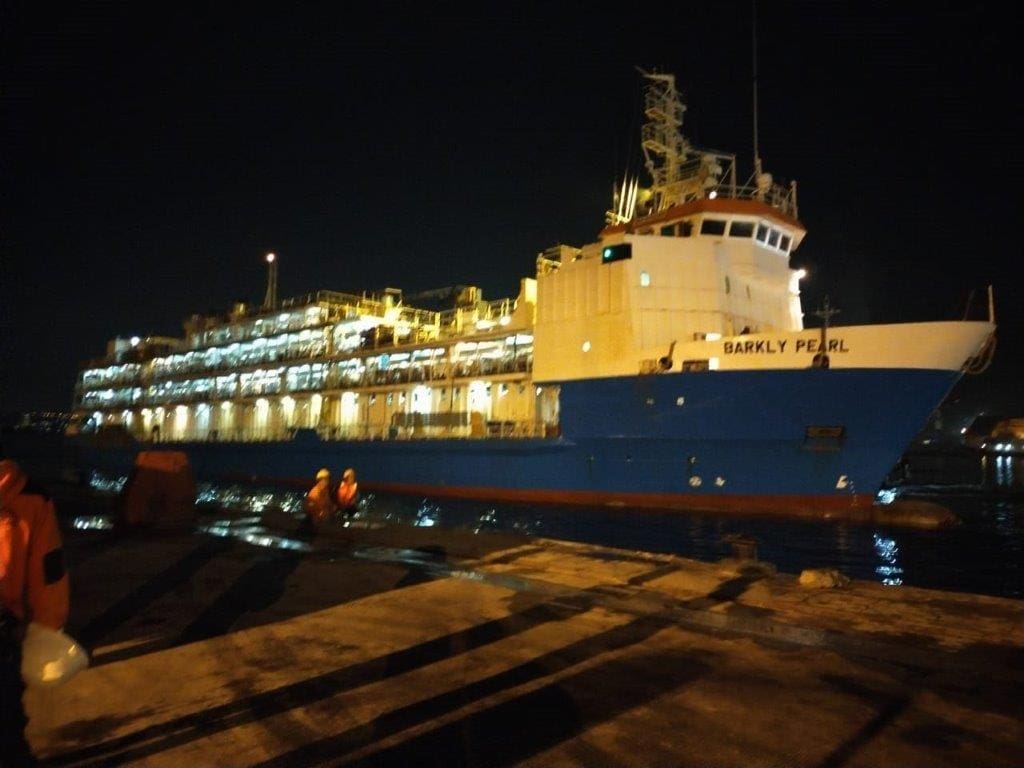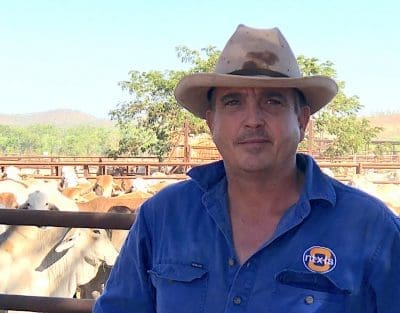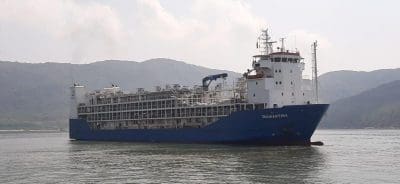EVERY livestock vessel operating from Australia must comply with the world’s most rigorous standards and regulations, industry representatives have pointed out in response to recent public debate about ship safety.
A Beef Central article earlier this week drew attention to rising global media scrutiny of the safety of livestock ships, and in particular converted versus purpose-built livestock carriers, in the wake of the Gulf Livestock 1 tragedy.
Suggestions that all converted livestock carriers are less safe or stable than purpose-built vessels have been strenuously opposed by ship owners and vessel operators, describing such claims as based on a fundamental lack of understanding.
The Gulf Livestock 1 disaster has occurred in what has been an incredibly tough year for the transport of cargo globally and domestically, and a year in which the work of ship crew members to keep goods moving has perhaps never been more vital.
“The general public should be very appreciative and acknowledge the role of the seafarer during the COVID-19 pandemic,” said Nick Thorne of NTXLS Group, which owns the registered premise Cedar Park, south of Darwin, and Cattle Line, which owns and operates two livestock carriers, the Barkly Pearl and the Diamantina.
“The loss of the Gulf Livestock 1 is a tragedy for the entire maritime industry and all families that rely on the receipt of wages/salary from the global shipping industry.”
While the tragedy has drawn attention to the safety of livestock ships operating globally, the debate has also largely overlooked the stringent standards all livestock export ships – both converted and purpose built – must pass in order to operate from Australian shores.
Australia is widely acknowledged as the world leader in the export of livestock, based on the prescribed, legislated standards and high levels of monitoring and traceability to which the industry is required to adhere, which are unparalleled globally and in any other sector in Australia.
As discussed in our earlier article, there are more than 150 livestock carriers operating around the globe. While it is difficult to get precise figures, Beef Central’s analysis suggests around 30 vessels have operated from Australia in the last 12 months, which requires them to have current accreditation with an Australia Certificate for the Carriage of Livestock (ACCL) from AMSA.
Mr Thorne said the ACCL was one of the most difficult maritime certificates to attain and maintain anywhere in the world, and is regularly revised and improved upon, most recently with new changes and upgrades introduced around ventilation standards in May of this year (AMSA marine order 43).
International Association of Classification Societies class membership of a vessel is another minimum requirement for entry. Livestock carriers not trading from Australia generally use a less stringent class society.
While there has been some focus on the age of livestock operating vessels, the most important determining factor for operation according to he said wasthe maintenance of the main engine and auxiliary engines and the schedule for rebuild and overhauling, plus the integrity of the hull steel plate. IACS class vessels are required to have drydocking/surveys every two and a half years.
A ship’s ‘flag’ is also an important factor in determining the safe operation (more detail here). Flags are ranked each year from quality flags to flags with poor performance that are considered high risk, published every year as the ‘white, grey and black list’. No livestock carrier accredited to operate from Australia sails under a grey or black flag state.
Conversions and newbuilds
Mr Thorne explained that the process for a vessel to enter the Australian trade starts at the desk of a highly skilled naval architect that understands IACS class requirements and AMSA marine order 43.
“Stability criteria must be met unquestionably, and if not, the vessel cannot be considered,” he explained.
“Vessel selection is paramount and often very difficult to find the right vessel.”
He said conversions were a more suitable choice for one off projects for trade specific purposes, while new builds were more suitable for fleet replacements, as keel and hull platform and drawing replication was more commercially viable.
Vessels converted for the non-Australian trade generally started in reverse – i.e. a vessel was purchased before stability criteria was established.
“Livestock services are life support for the cargo i.e. auxilliary engines and generators, electrical lines, reverse osmosis plants, ventilation,” he explained
“All livestock services have a redundancy i.e. machinery, electrical , water supply is duplicated equally.
“Extensive spares for all propulsion and livestock services must be carried on board the vessel and replenished when used.”
Open or closed decks
On the question of open versus closed decks, this was often a trade specific requirement.
Smaller vessels with open decks did not often conduct long haul voyages or diversify on trading routes.
Small medium carriers with closed decks were often faster and had the ability to conduct proper worldwide trading ensuring the owners have many market options
Larger livestock carriers were nearly all open deck due to weight and stability factors.
Mr Thorne said Cattle Line’s two vessels, Barkly Pearl and Diamantina, were a market specific design.
“As owners we really only want them trading within the South East Asian region, predominantly Indonesia.
“At conversion we decided to sacrifice additional pen area for greater comfort for the livestock ie our deck heights are much greater than industry standard thus allowing greater airflow and ventilation.
“We ensured that our livestock services were practical and robust for ease of maintenance plus efficient cargo and port operations.
“The greater majority of our crew are career livestock seafarers and very dedicated to their job and the industry.”
Mr Thorne said owners of livestock carriers that have the ability to trade from Australia were always committed to achieving high outcomes and a safe environment for the livestock on board.
“I personally enjoy visiting other owners vessels and observing the ongoing innovation and technical achievements that are ensuring that our industry is delivering well above the standards for our valuable cargo and seafarers.”




I find your publications about livestock carrier rich in information and very important for my studies . I would like to receive your next publications on my mailbox if possible.
Do these ships carry EPIRB’s, did Gulf Livestock 1? I have been made aware of the lack of safety protocols on these ships. Its been reported to me there are no safety inductions when comencing work of these ships.
I followed with interest the discussion which followed the dramatic loss of Gulf Livestock 1 and its crew and cargo. I believe that after having designed a built some of the best livestock carriers I may humbly bring up my opinion. The safety of vessels is regulated by international rules and each ship who is permitted to sail in Australia or the rest of the world does so because it respects the regulation and especially SOLAS (Safety of Life at Sea) which has been ratified by all member of IMO and verified by Class Society and Port Authority. A well designed and executed conversion is as safe as a new build ship but building new allows to design a ship which can guarantee a higher animal welfare standard and be more versatile while lasting longer. The real issue is the average age of the AMSA approved fleet which is too old. Purposely built vessels also get old and so does their steel plate, their pipes, their cable, systems etc. so their safety margins decrease even if they remain within the limits. Statistically casualties increase as ships get old. If Australia wants to improve safety of livestock carrier needs to impose an age limit and after that age the ACCL is withdrawn. It is enough to look at what BHP or Rio Tinto do when they vet ships, anything older than a certain age is a no-go regardless of the cost; and they carry iron ore, not live creatures. Establishing an age limit of 20 years will incentivize new ships being built because if you convert a 10 years old ship you only have 10 years to depreciate the investment so ship owners who wants to maximize their investment will go for a new vessel and get 20 years out of them. What the industry lacks today is a vision and a commitment to best practice to gain credibility by showing investment in new ships and modern technology and if the Australian government would impose an age limit with a short phase out period, it would put in place effective steps to improve the industry standards. When I was running Wellard we have always had a strategic view on our fleet and during the years I built the Alnilam (now Angus Express – 1998) the Becrux (now Ocean Drover – 2002), The Castor’s sister ships (now Swagman and Bahijah – 2010) and Hull 1093 (Now Al Kuwait – 2016) scrapping old ships along the way. Each new vessel had represented a step forward. Unfortunately, now all most modern ships have been sold. If old vessels are allowed to trade forever there will be very little incentive to build new, modern, safe and environmentally friendly ships.
Mauro Balzarini
Australia can impose compliance with Marine Orders, however when it comes to the safe operation of these vessels Australia has failed. These vessel are foreign crewed and foreign flagged. If you wanted to maintain the highest safety standards then paying crew $4.00 a day hardly achieves that. Australia sold out and decided that letting foreign flagged and foreign crewed vessels was cheaper and better. Vessels sinking, and crew not coming home is the price we pay for selling out to the lowest bidder. Sadly, this will not change until Australian shipping given an incentive to operate again. Expect more vessels to sink and more deaths, this is simply the price you pay for selling out. A simple solution – All livestock must be exported on Australian flagged and Australian crewed ships. This is not a draconian approach, many countries do this.